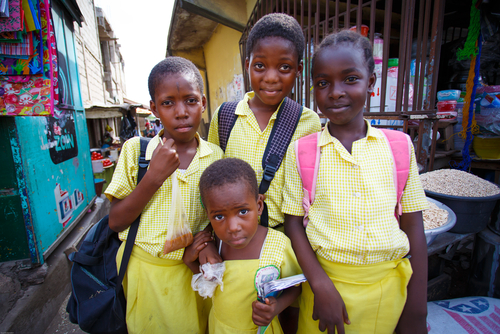YouthSave Ghana: Testing Impacts of Savings on Youth Financial Capability and Development

Overview
- Objective: The primary research objective of this project was to investigate the potential of savings accounts as a tool for youth development and financial inclusion in low- and middle-income countries.
- Initiative/Approach: Youth Save Ghana was a longitudinal cluster-randomized research project targeting young people between 12 and 18 years. Using simple random assignment, we assigned 50 schools to treatment and 50 schools to the control. The intervention in the experiment was an experiential financial inclusion program that included a school-based savings program for 25 treatment schools and a marketing outreach savings program for the other 25 treatment schools.
- Findings: Results from both the bank transaction data and survey indicate that greater proportions of youth who received in-school banking had heard of, opened, and deposited into Enidaso accounts compared to youth who only received marketing and the control group.
Details
Partners
Research Partners
- Center for Social Development at Washington University
- Institute of Statistical, Social, and Economic Research
Implementation Partners
Funding Partners
Contributors
Back to InitiativesThe Global Financial Index found that in 2013 only 44% of the world’s youth aged 18 to 25 years had a bank account and 18% had saved money the previous year (Demirguc-Kunt, Asli, Leora Klapper, Dorothe Singer, & Peter Van Oudheusden, 2015). Access to formal savings products, financial literacy, and encouragement to save will allow higher financial capability and smoother economic transitions to adulthood — but it still remains out of reach for some youth
GSDI sought to increase access and use of formal financial services for youth in resource-limited settings, particularly from lower income families. The YouthSave Ghana experiment was implemented across all districts in eight of the 10 regions where HFC Bank, the financial institution (FI) partner, operates. Targeting young people between ages 12 and 18, 100 junior High Schools were randomly selected — half receiving treatment, half being control.
For the treatment schools, 25 received an experiential financial inclusion program, which included a school-based savings program, and the other 25 treatment schools received a marketing outreach savings program. 61 to 63 youth from each school were selected using simple random selection. This intervention allowed for youth to open savings accounts into which they could deposit small amounts. While boys reported having more money than girls, overall, treatment youth performed better than control youth and were more oriented to a stable future.
Location
8 regions in Ghana
